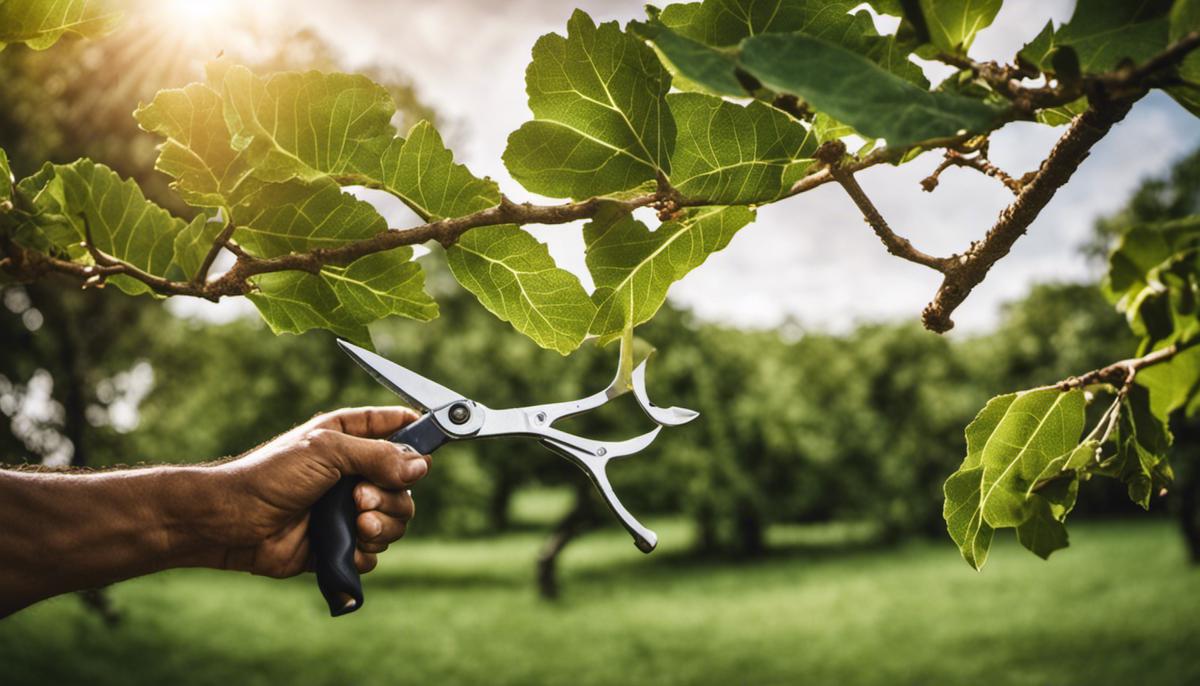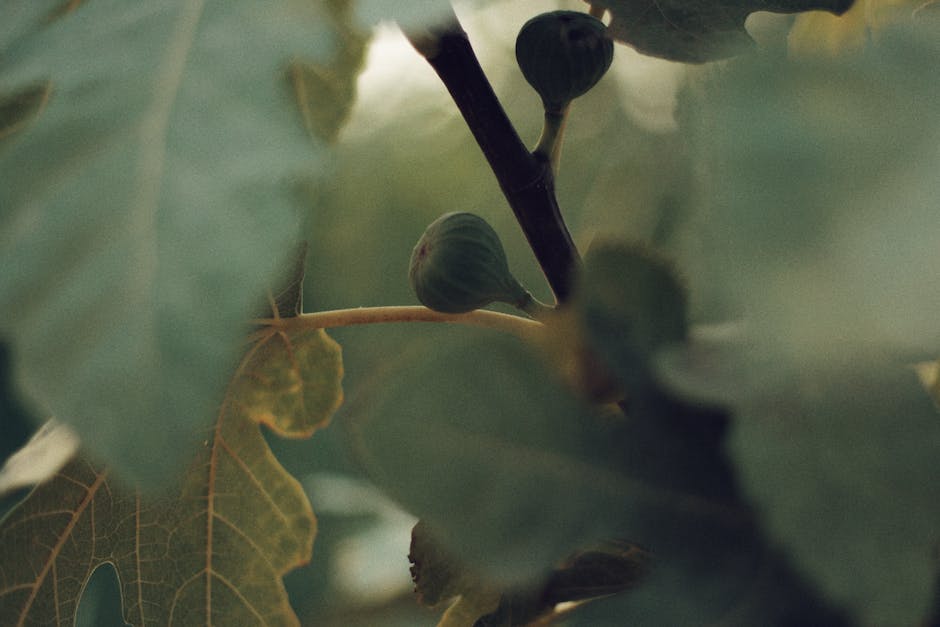Mastering Fig Tree Cultivation from a Cutting

Embarking on the journey of growing your own fig tree from a cutting can be a gratifying and fruitful enterprise. It’s an intricate, multistep process that begins with identifying and preparing a healthy, mature cutting. Through careful understanding of optimal conditions including timing, preparatory measures, and the complexities of the plant itself, one can successfully navigate the intricate process of raising a fig tree from a cutting to a fully-grown, productive plant. Furthermore, the undertaking of planting your own fig tree cutting not only contributes to personal satisfaction, but also significantly enhances your understanding of plant growth and botany.
Choosing and Preparing the Cutting
Crafting Infinite Fig Trees: Fig Tree Propagation
For those who find a comforting allure in the garden, the sustainable art of fig tree propagation comes as a magnetic activity. There’s something incredibly rewarding about watching a cutting, a twig essentially, bursting into life and producing unbeatable sweet fruits. This post is a step-by-step guide to make any green thumb a master at picking and priming a fig tree cutting for propagation.
Stage One: The Perfect Selection
The best cuttings for fig tree propagation are dormant one-year-old wood – branches that grew the previous season. These branches are easily identifiable by their brown color and the rings visible at each end of the stick, providing reference to their age.
Size does matter here. The ideal cutting should be roughly 8-12 inches long and half an inch in diameter, akin to a typical writing pencil. Smaller branches lack the resilience of their thicker cousins to survive the process.
Adequate timing plays a significant role in propagation success. Late winter or early spring, when the tree is both dormant and disease-free, is the optimum time to snip off your cuttings. The risk of branch desiccation is minimal, and the cuttings will bloom in harmony with their mother tree.
Stage Two: Clippers in Action
The cutting needs to be snipped off at a 45-degree angle. Gardeners have vouched for years for this particular angle because it encourages water to slide off, reducing the cutting’s risk of rotting. At the same time, it provides a larger area for the cutting to suck up the much-needed water.
Keep those gardening disinfectant wipes handy! Prior to taking the cutting, use these wipes to cleanse your tools. Step like this ensure that the propagation process isn’t hampered by disease transmission. After securing your cutting, ensure you’ve cut directly below a node – those small swellings on the branch from which leaves grow.
Stage Three: Preparation for Propagation
In fig propagation, the mantra ‘less is more’ holds water. Leaving one or two buds on each cutting reduces moisture loss. If your cutting has more than a couple, snap off the excess with a clean thumb. Interestingly, the buds positioned towards the bottom often sprout the best roots.
Potting mix serves as an ideal medium for the initial stages of propagation. A mix of half peat moss and half perlite offers an airy, well-draining environment for your cutting. Insert the cuttings approximately two inches into the pot with a two-inch gap maintained between individual cuttings.
Stage Four: Fig Nursery
Finally, supply your newbie figs with copious amounts of light – foolproof precipitation to a healthy rooting process. For moisture regulation, place your cutting pot in a plastic bag, creating a miniature greenhouse, and mist them daily. Keep the pot warm, but keep it out of direct sunlight to prevent overheating.
Voila! Patience is the final ingredient needed now before a legion of fig trees start dotting your backyard. So, are you ready to gift yourself the perpetual joy of harvesting fig fruits? Trust me, once you start, you won’t stop! Remember, the mantra of successful fig tree propagation lies in selecting the right cutting, perfect preparation, and heaps of patience.

Planting the Cutting
Venturing now in the next stage of fig tree propagation, it’s time to delve into the excitement of planting and nurturing the prepared fig tree cutting. This period of a fig tree’s life journey is a critical phase filled with anticipation and thrill.
Begin by gathering the necessary materials: a planting pot at least 8-12 inches wide and as deep, a high-quality, well-draining potting mix, and a trusted root hormone powder. It’s essential to use a pot with enough depth to support the developing roots. Using a well-draining potting mix ensures your precious cutting won’t be at risk of root rot.
Before planting, dip the bottom node (where the new roots should grow) of the fig cutting into the rooting hormone. This step may seem small, but don’t underestimate it! The hormone helps expedite root production, leading to hearty new growth and a stronger foundation for your fig tree’s future.
Next, fill the pot with your well-draining potting mix and make a hole, using a finger or tool, in the soil that’s deep enough to accommodate the cutting. Place the fig cutting into the hole, making sure it stands upright. Firmly pack the soil around the stem once it’s in the ground. This firmness helps secure the cutting in place and establishes a genuinely nurturing environment.
Certain fig varieties can be hefty drinkers, so water your plant thoroughly after you’ve finished planting your cutting. The soil should be kept consistently moist but not waterlogged. Implementing a balanced watering routine is a delicate art and one that pays dividends, as the embryonic roots crave a damp environment to proceed with growth.
Another vital tenet of this post-cutting process is the implementation of the right amount of heat. Remember, fig trees are typically mutants of warmth, native to warmer zones. Hence, maintaining a temperature of around 70-85 degrees Fahrenheit would be favorable in stimulating the root development.
Now, let’s embark on a course of consistent care and watchful patience! Unlike other stages, there are no shortcuts here. It’s about providing a consistent, hospitable environment for your fig cutting to grow. Continual observation is crucial here. Make sure the soil never dries out completely, as this could greatly delay or prevent rooting.
In about 4-6 weeks, tiny roots should start emerging, and eventually leaves. There’s no better ode to your nursery prowess than those first sprouts, signaling a successful propagation. Mist the leaves once they bud out to help transition them into a pullulating life ahead.
Arm yourself with knowledge, persistence, and the know-how to troubleshoot minor issues, and you’ll find fig tree cuttings to be a truly satisfying form of horticultural enchantment. Happy planting!

Maintenance and Care
Time to delve deeper into the fascinating world of fig tree cultivation. After successfully propagating and planting your fig cutting, what are the next steps to ensure the long-term health and productivity of your beloved tree?
The critical post-planting phase requires keen observation, a proactive approach and a consistent watering regimen to guarantee fig tree health and vitality for years to come.
Once your fig tree is rooted and showing signs of new growth, it’s time to move it into the environment where it will thrive – outdoors. However, transitioning your fig tree from indoors to outside needs to be done gradually. This process is known as “hardening off”. Start by placing the tree in a shaded area for a few hours a day, slowly increasing its exposure to the sun over two weeks. This helps the fig tree adapt to outdoor conditions without risk of sunburn or wind damage.
When it comes to ensuring long-term productivity, a proper fertilization schedule becomes indispensable. A balanced fertilize, applied in early spring and midsummer, promotes vigorous growth and boosts fig production. This combination of Nitrogen (N), Phosphorous (P) and Potassium (K), along with a mix of necessary micronutrients, ensures green, lush foliage and abundant figs.
Pruning is another activity that plays a significant role in the ongoing health of your fig tree. Conduct late winter pruning when the tree is dormant and focus on removing dead or diseased branches, which helps the tree channel its energy to healthy growth. Don’t shy away from aggressive pruning; fig trees are hardy and can handle it.
Protection from pests and disease is an ongoing effort. Regular inspection for any signs of pests or disease is a necessary part of fig tree care. If issues arise, use organic pesticides and fungicides to prevent further spread. Also, clearing fallen leaves and detritus reduces the chances of pest and disease infestation.
Consistent water regulation is key, especially during the summer months. The fig tree prefers well-drained soil, and heavy-handed watering could lead to root rot. Therefore, the rule of thumb is to water deeply but infrequently, ensuring that the majority of the water reaches the deep root system.
Lastly, adapting to the fig tree’s growth and understanding its behavioral patterns each year is pivotal for successful cultivation. This insight will equip you to make necessary changes, whether it’s amending soil, adjusting water schedules, or boosting fertilizers, guiding the fig tree to achieve its full potential.
Adopting these care methods sets the stage for a thriving fig tree, laden with sumptuous figs ready to be enjoyed, season after season. Remember, fig tree mastery isn’t achieved overnight. It’s a journey built on passion, patience, and persistence. Enjoy every step!

Mastering the art of maintaining and caring for a growing fig tree is equally as important as the initial steps of preparing and planting. Each aspect of care, from the precise pruning techniques, to vigilant pest management, to promoting a plentiful fruit yield, collectively ensures the health and longevity of your fig tree. When these steps are done with attention to detail and commitment, growing a fig tree from a cutting transforms into a valuable journey of learning, growing, and ultimately, reaping the fruits of your hard work.



